You’ve probably heard the warning before: don’t pump gas with the car on! But do you know why? Turns out, there are some pretty serious dangers involved in pumping gas with the car running. This blog post will discuss what happens if you pump gas with the car on, and why it’s such a dangerous practice. It will also provide some tips for avoiding these dangers. So, read on to learn more!
Is it dangerous to pump gas with the car on?
It increases the risk of fuel vapors entering the car’s engine and causing a fire or explosion. Additionally, if you forget to turn off your car while pumping gas, gas can spill from the nozzle onto hot metal parts of your car, putting you at risk for burns and fires.
To prevent these potential dangers, it’s important that you always pump gas with your vehicle turned off. If you need to keep the engine on for any reason, such as keeping the air conditioning running in hot weather, make sure to park away from any sources of open flame or sparks before beginning to pump gas. Make sure all cigarettes are extinguished before pumping gasoline as well. Finally, when done pumping gas be sure to return the fuel nozzle and cap your gas tank. This will help prevent any potential leaks or spills.
Safety is key when pumping gas, so always ensure that you turn off your vehicle before beginning to pump gasoline. Doing so will help reduce the risk of fire or explosion and keep you safe while refueling your vehicle.
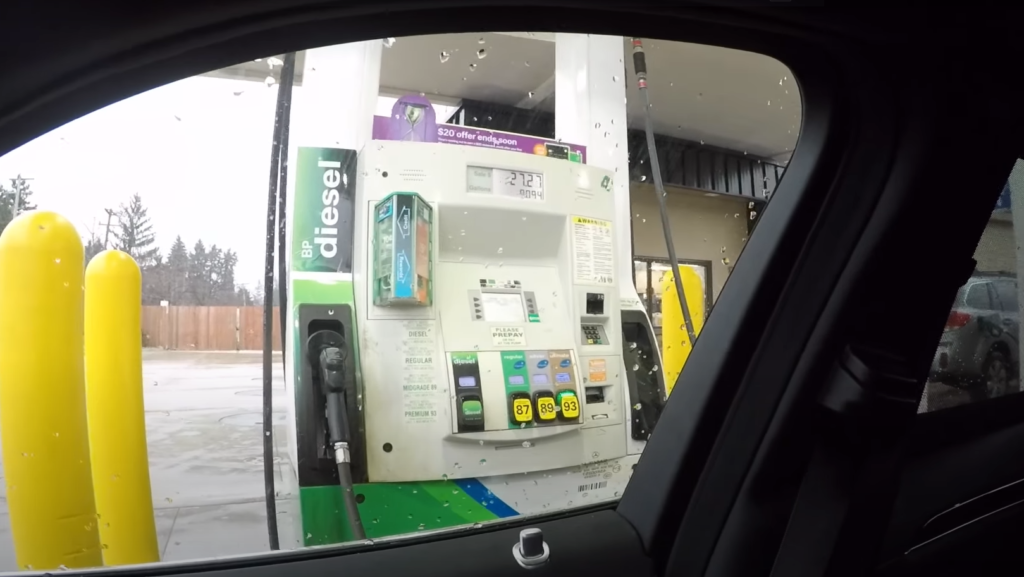
What steps should you consider while fueling up?
- Before opening the fuel tank, make sure that you are purchasing the correct type of fuel for your vehicle.
- If possible, park your car in an open and well-ventilated area before refueling to reduce any risk of fire or explosion due to gas vapor accumulation.
- Check the fuel gauge to ensure that you don’t end up overfilling it and damaging your vehicle’s engine or emission system.
- Securely fasten the nozzle to the filler neck and slowly squeeze the trigger handle of the nozzle while watching out for any signs of leakage from around the cap, hose, or nozzle itself.
- Automatically shut-off nozzles have sensors that detect when the tank is full and will switch off automatically, based on the pressure difference between the inside and outside of the fuel tank.
- If you are using a manual nozzle, then be sure to stop squeezing it once you hear a clicking sound indicating that gas has started overflowing back out from the fill pipe.
- After refueling your car, secure the cap firmly onto its place making sure that it is shut tight so that no gasoline fumes escape into the atmosphere or near any open flames or sparks.
- Finally, wipe up all spilled fuel with an absorbent cloth or sponge before moving away from the area.
By following these simple steps carefully while fuelling up your vehicle, you can ensure the safe and efficient refueling of your car [1].
What happens if you put too much gas in your tank?
Putting too much gas in your tank can cause a variety of problems. Excess fuel can seep into the evaporative emissions control system and contaminate it, resulting in costly repairs or replacements. This can also lead to engine misfires, decreased performance, and possibly damage to spark plugs or other components due to the presence of excess fuel. Additionally, overfilling your tank can cause pressure buildup within the fuel system which may lead to leaks or ruptures in the lines that connect the fuel pump and injectors.
Finally, if you fill up your tank too quickly it can create a splashing of fuel onto hot exhaust components which could result in a fire hazard. Therefore, it is important to be careful when refueling your vehicle and avoid filling up your tank too rapidly or to the point of overflowing [2].
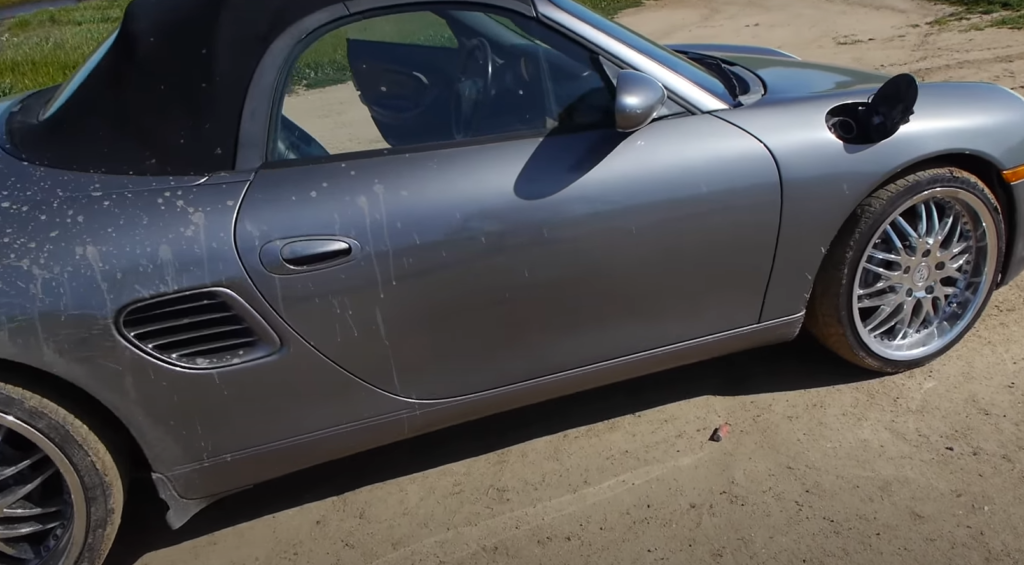
Potential Risks Of Leaving Car On While Pumping
Catastrophe Fire
The most immediate risk of leaving your car on while pumping fuel is that a spark from the engine or vehicle electrical system could ignite fumes from the gasoline and cause a fire. In extreme cases, this could lead to catastrophic results such as an explosion.
Gas Theft/Vandalism
Leaving your car running with the doors unlocked also increases its vulnerability to theft or vandalism while you are away from it. The culprit may steal something valuable out of your car or even siphon gasoline directly from the tank. As a precautionary measure against these risks, be sure to lock all doors and close any open windows before getting out to pump gas.
Fumes Inhalation
If your car is left running while you are outside, you risk inhaling the fumes that are being produced by the exhaust system. These fumes can cause serious health problems such as headaches, nausea, dizziness, and fatigue. To avoid this issue, always turn off the engine before you get out of the car at a fuel station.
Spark Plugs Damage
Leaving your car running while pumping gas can also cause damage to the spark plugs or other ignition components due to a lack of lubrication. To avoid this hazard, make sure you turn off your car before getting out to pump fuel.
Get Charged By Traffic Police
Lastly, you could also get charged by traffic police for leaving your car running while pumping fuel. Most countries around the world have strict laws against this practice as it is seen as a hazard to public safety. To avoid getting fined or reprimanded, make sure to always turn off your vehicle and comply with local laws [3].
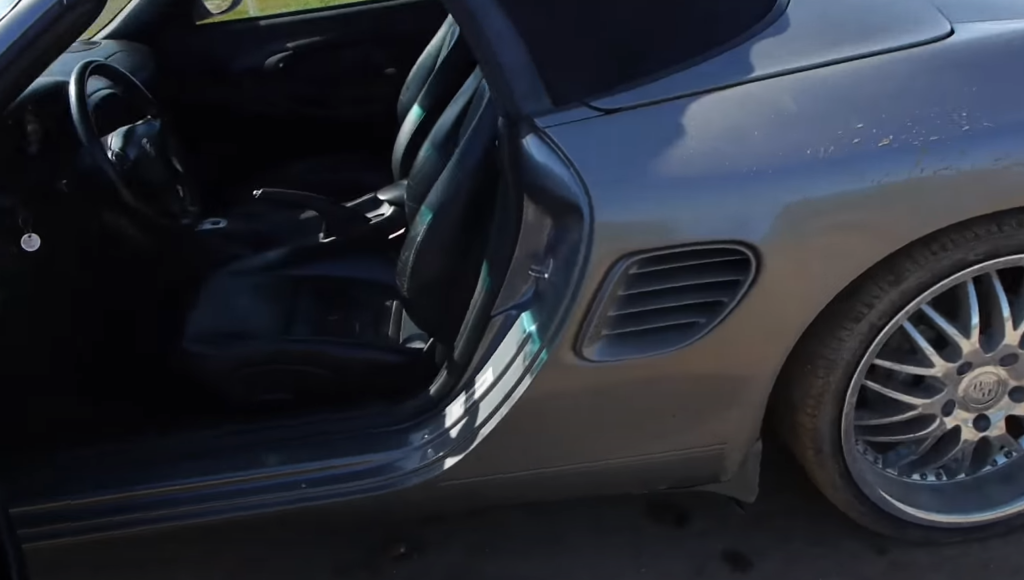
Safety Precaution To Take While Fueling Gasoline
- Make sure your vehicle is parked in a designated parking spot, away from open flames and other sources of ignition, such as cigarettes, matches, or lighters.
- Turn off the engine and remove the key from the ignition before fueling your vehicle.
- Do not top off at the pump; overfilling can cause gasoline to spill into the street, which is dangerous for everyone involved.
- Use an approved fuel container when transporting gasoline to avoid any potential spills and reduce fire hazards associated with improper storage of flammable liquids like gasoline.
- If you do spill some gas while filling up your car, wipe it up immediately using an absorbent material, such as sand or kitty litter.
- Never smoke while near a fuel pump, as the fumes can easily ignite.
- Pay attention to the nozzle when refueling your car; if you notice any drips or evidence of leakage, stop and report it immediately to station personnel or call 911 for emergency assistance.
- Check for signs of tampering on the fuel pump before using it; if there is any visible damage or deformities, do not use it and notify authorities immediately.
- Securely cap all containers that held gasoline after fueling and make sure they are stored in an area away from children and open flames or other sources of ignition.
- strong>Be alert when refueling at the pump and keep an eye out for any potential hazards. If you see anything suspicious, contact your local law enforcement or fire department immediately.
- Make sure to close the fuel cap securely after refueling to avoid gas fumes from escaping into the atmosphere.
- Lastly, always read the labels of fuel containers carefully before use and follow all safety instructions provided by the manufacturer. Never mix gasoline with other chemicals as this could create hazardous fumes or ignite unexpectedly.
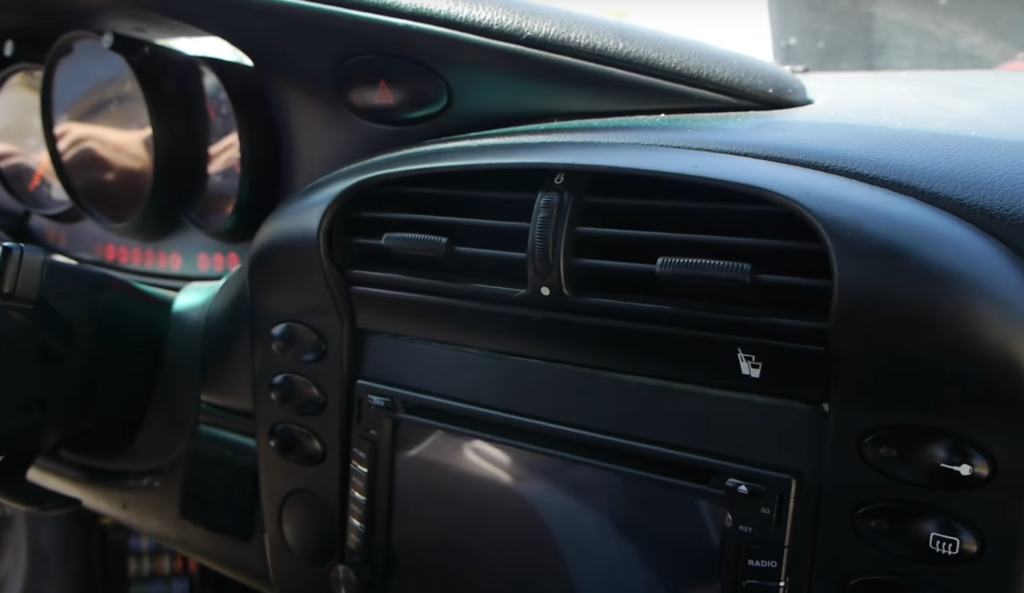
These simple steps can go a long way in protecting you and others when fueling up at the pump. Safety is important, so take precautions while refueling to ensure that everyone remains safe! Be alert, and aware of your surroundings, and remember to follow these tips every time you fill up [4].
Additional Safety Tips for Refueling Your Vehicle
- Wear appropriate protective clothing and eyewear when refueling to guard against potential splashes or spills of gasoline.
- Never leave the nozzle unattended; if you do, other people may use it without your knowledge, which could lead to dangerous situations.
- Do not overfill the tank as this can cause a hazardous build-up of pressure in the fuel tank that can potentially explode or damage parts of your car’s engine.
- If possible, wait outside while someone else refuels your vehicle; this will help keep any combustible materials away from open flames and sparks that may be present at the pump.
- If you observe any visible signs of corrosion or damage to the fuel pump, contact station personnel for assistance before using it.
- Refuel your vehicle in a well-ventilated area and make sure all windows are closed when refueling to avoid inhalation of toxic fumes or vapors.
- Always check that the nozzle is tightly secured before beginning to fill up; if it’s not, switch nozzles immediately and report the problem to station personnel right away.
- Make sure that everyone who is helping with refueling understands basic safety procedures such as avoiding smoking while pumping gas and obeying all instructions provided by the station attendant or posted on the pump itself.
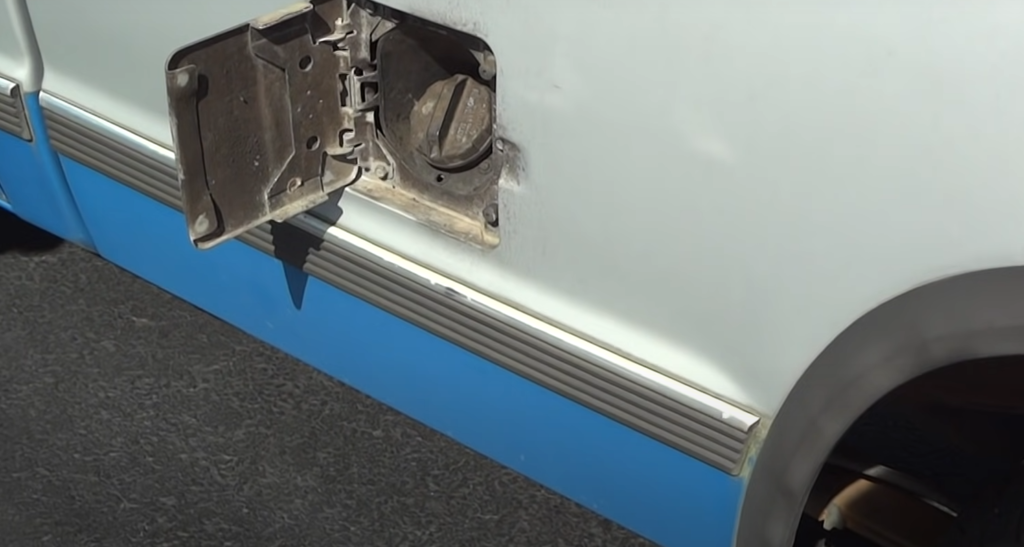
Fueling Follies: Unraveling the Consequences of Pumping Gas with the Car On
Curious about the potential risks and consequences when pumping gas with your car’s engine running? Dive into the comprehensive table below to understand the intricacies, potential hazards, and safety measures to consider in this somewhat precarious scenario.
| Aspect | Potential Consequences | Safety Measures | Additional Considerations |
|---|---|---|---|
| 1. Fire Hazard | Increased risk of fire due to fuel vapors and static electricity | Turn off the engine before refueling, avoid smoking or using electronic devices | Follow posted warnings at the gas station, stay alert to potential hazards |
| 2. Check Engine Light | May trigger the check engine light or other warning indicators | Turn off the engine, wait a few minutes, and restart after refueling | If warning lights persist, consult a mechanic for a diagnostic check |
| 3. Evaporative Emission System Issues | Possible damage to the vehicle’s evaporative emission system | Follow manufacturer recommendations and turn off the engine during refueling | Regular maintenance can help prevent issues with the evaporative emission system |
| 4. Fueling Efficiency | May lead to incomplete fueling or fuel system malfunction | Turn off the engine for optimal fueling efficiency | Exercise caution to avoid spillage and ensure a proper seal on the fuel cap |
Explanation of the table:
- Fire Hazard: Pumping gas with the car on increases the risk of fire due to fuel vapors and static electricity. Turn off the engine before refueling, avoid smoking or using electronic devices, and follow posted warnings at the gas station.
- Check Engine Light: This action may trigger the check engine light or other warning indicators. Turn off the engine, wait a few minutes, and restart after refueling. If warning lights persist, consult a mechanic for a diagnostic check.
- Evaporative Emission System Issues: Pumping gas with the car on can cause possible damage to the vehicle’s evaporative emission system. Follow manufacturer recommendations and turn off the engine during refueling. Regular maintenance can help prevent issues with the evaporative emission system.
- Fueling Efficiency: Pumping gas with the car on may lead to incomplete fueling or fuel system malfunction. Turn off the engine for optimal fueling efficiency. Exercise caution to avoid spillage and ensure a proper seal on the fuel cap.
FAQ
What do you do if you spill gas on your driveway?
If you spill gas on your driveway, it is important to clean it up quickly and safely. Start by absorbing the excess fuel with kitty litter, sawdust, or any absorbent material. Once the area is dry, scrub the spot with a detergent solution and rinse it off with water. If there are still stains remaining, you may need to use paint thinner or another chemical-based cleaner specifically designed for removing gasoline stains. Once the stain is gone, make sure you seal the asphalt or concrete surface to prevent future staining.
How long can a car idle without causing damage?
If you need to leave your car running for an extended period, such as while waiting in line or at a drive-thru, it is best to turn off the engine and restart it when necessary.
What factors affect my gas mileage?
Several factors can have an impact on your gas mileage, including the type of vehicle you drive, driving conditions, and even how you maintain your car. Generally speaking, smaller lighter vehicles tend to get better gas mileage than heavier ones because they don’t require as much fuel to move them. The type of terrain you are driving on, wind resistance, and the speed at which you drive can also affect your gas mileage, as well as how often you get regular maintenance such as oil changes and tune-ups.
Is idling a car bad?
Idling a car for an extended period can be bad for the engine and it will also increase emissions and fuel consumption. It is best to only idle for brief periods, such as while waiting in line or at a drive-thru. If you need to leave your car running for an extended period, it is recommended to turn off the engine and restart it when necessary.
What happens if I don’t change my oil?
If you do not regularly change the oil in your vehicle, your engine may start to suffer from wear and tear over time. Oil helps lubricate moving parts within the engine and keeps them from overheating due to friction. Without regular oil changes, these parts may begin to fail prematurely due to excessive heat, leading to costly repairs or even engine failure. It is therefore important to change the oil in your car regularly according to the manufacturer’s recommended schedule.
How is long-spilled gas flammable?
Gasoline is composed of a variety of hydrocarbons and other chemicals that are highly flammable. This means they can easily ignite when exposed to sources of heat or flame, such as an open flame, a spark from electrical equipment, or even static electricity. Long-spilled gas can pose a serious fire hazard due to its high flammability and should be cleaned up immediately.
What should I do if I get gasoline on my skin?
If you get gasoline on your skin, it is important to act quickly and wash the area with soap and water for at least 15 minutes. If any irritation persists, seek medical attention as soon as possible. It is also important to avoid inhaling fuel vapors or fumes as they can be harmful to your lungs.
Is it safe to pump gas with the car engine running?
No, it is not safe to pump gas with the car engine running. When you pump gas with the engine on, there is an increased risk of static electricity buildup and the potential for sparks. This can lead to a fire hazard, posing a danger to you, other customers, and the gas station environment. It’s crucial to turn off the engine before pumping gas to ensure a safe and risk-free refueling process.
What are the dangers associated with pumping gas while the car is running?
Pumping gas with the car engine running poses several dangers, including the risk of static electricity discharge. This static electricity can ignite gasoline vapors, leading to a fire or explosion. Additionally, modern vehicles with electronic fuel injection systems may communicate with the fuel pump, causing potential safety issues if the engine is left running during refueling. Turning off the engine is a crucial safety measure to mitigate these risks.
Can pumping gas with the engine on damage the vehicle’s fuel system?
While pumping gas with the engine on may not necessarily cause immediate damage to the vehicle’s fuel system, it poses a significant safety risk due to the potential for static electricity ignition. However, newer vehicles with electronic fuel injection systems may experience communication issues with the fuel pump, leading to inaccurate readings or other complications. To ensure both safety and the proper functioning of the vehicle, it’s essential to turn off the engine before refueling.
Are there legal consequences for pumping gas with the car engine running?
Many gas stations have safety regulations and signage requiring customers to turn off their engines while refueling. In some regions, there may be legal consequences, including fines or penalties, for not following these safety guidelines. It is essential to adhere to the rules and regulations of the specific gas station to avoid legal consequences and prioritize the safety of yourself and others.
What steps should I take if I accidentally start pumping gas with the car engine on?
If you accidentally start pumping gas with the car engine on, stop the fueling process immediately. Turn off the engine, and if the gas pump has an emergency shut-off button, use it to halt the flow of fuel. Inform the gas station attendant of the situation, and follow any safety procedures or guidelines provided by the gas station. Avoid restarting the engine until you have completed the refueling process and moved away from the pump.
Can static electricity from clothing or other sources ignite gasoline vapors while pumping gas?
Yes, static electricity from clothing or other sources can potentially ignite gasoline vapors while pumping gas. This risk increases when the engine is running due to the potential for static buildup. To minimize the risk of static discharge, it’s crucial to turn off the engine, avoid re-entering the vehicle during refueling, and touch a metal part of the vehicle before handling the gas pump nozzle to discharge any static electricity.
Useful Video: Can leaving car running while pumping gas start a fire?
Conclusion
Pumping gas with the car on is a habit that should be avoided whenever possible. Not only can it cause gas to evaporate, but it also contributes to air pollution and can run up the cost of fuel. Taking time out of our day to turn off the engine while pumping gas is a simple way to reduce your impact on the environment and conserve energy resources. With careful planning, you can all strive for a cleaner, more sustainable future for ourselves and the planet.
References
- https://www.wikihow.com/Pump-Your-Own-Gas
- https://www.cars.com/articles/what-happens-when-you-fill-up-with-too-much-gas-442051/
- https://axlewise.com/pumping-gas-with-car-on/
- https://www.boatingbasicsonline.com/important-boat-fueling-safety-precautions/

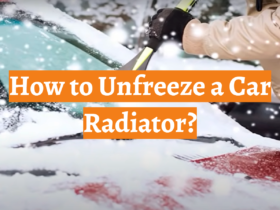
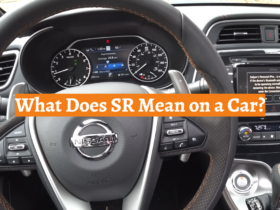


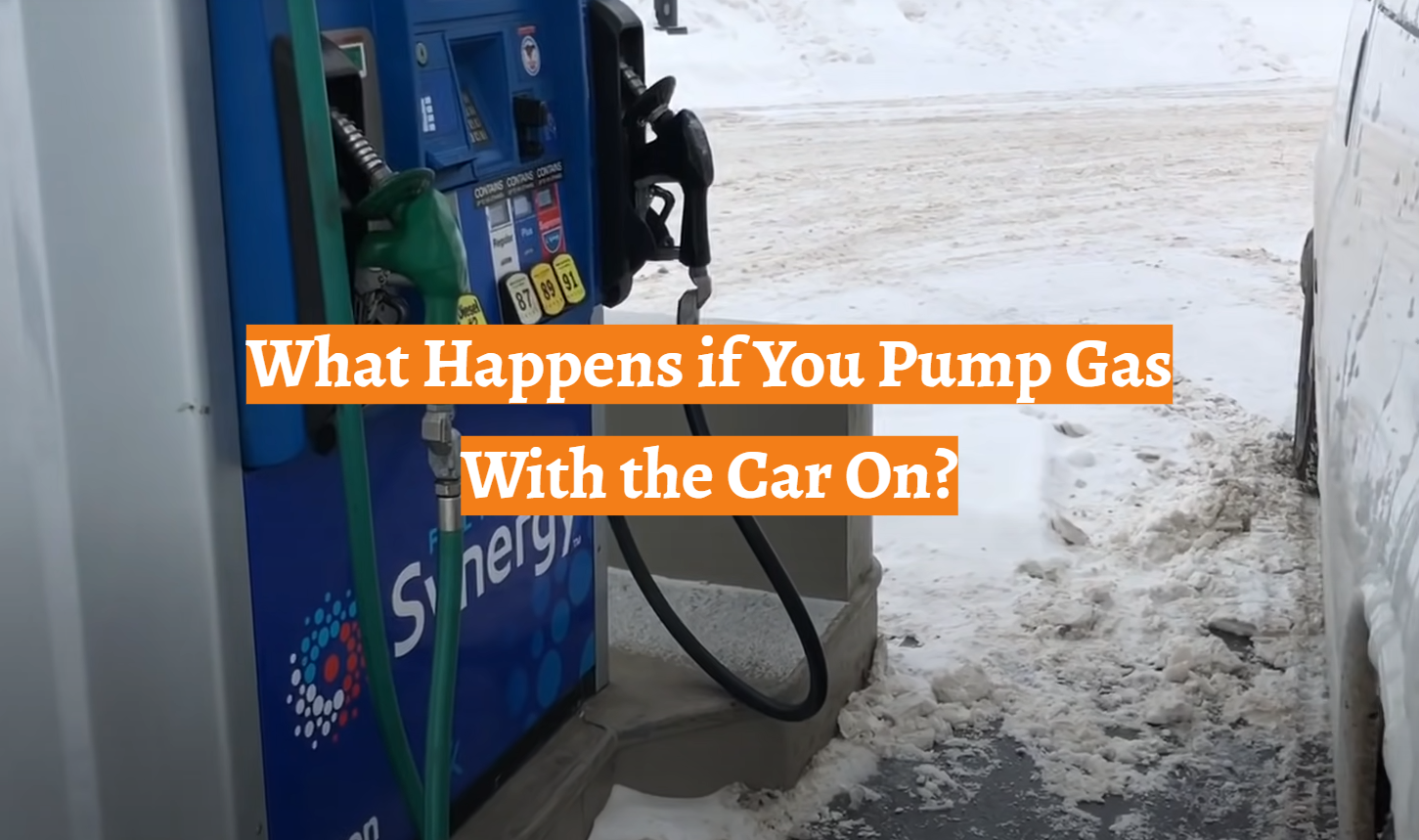
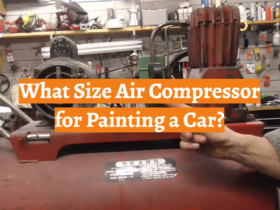



Leave a Review